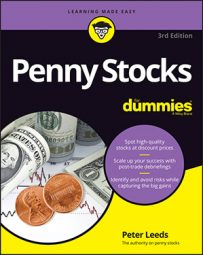The media was already driving the idea of the advantages the Internet would bring the world. They then had massive additional coverage of the Y2K bug (also known as the year 2000 switch, or the millennium bug). This full-time broadcast across all things media really drove people's focus toward anything and everything technology.
If you lived through the year 2000, you already know how the dot-com bubble ended. People were financially destroyed. Companies were bankrupt before they had decided on their logos. Entire industries were wiped out. Certain regions of cities, once thriving hubs, suddenly became desolate ghost towns.
A few people saw the writing on the wall — mainly two types of people: businessmen who understood how a company was meant to run and stock market analysts who understood manias and valuations.
Anyone who understands investor stampedes will be able to see the next one coming, and probably profit while getting out in time. The people who don't recognize an investor mania for what it is are typically the ones who get burned.
This time is different: Famous last words
The four most dangerous words in all of stock market investing: "This time is different."In any business cycle, investment phase, or new event, there will always be those investors who make a pretty good case that time-honored rules do not apply.
In their defense, when it came to the dot-com bubble, things did feel unique. After all, CEOs were as young as 20 years old, no company was making money, people could bring their dogs to work, and almost every business was bleeding cash (almost as if a greater burn rate equated to greater significance).
Unfortunately for this wave of Internet entrepreneurs, the old rules still applied. The purpose of a business is to make money. No matter how cool or hip or chic your company, you eventually have to pay rent and electricity.
The dot-com bubble came out of nowhere, and once it burst, it withered just as fast. Despite all the new technologies driven by the Internet superhighway, businesses still needed to be profitable — or, at the very least, have some proof-of-concept to develop a revenue stream. To survive, it was not enough just to be vaguely linked to this whole Internet mania, although before the bubble burst it served the underlying share prices very well.
It turns out that selling 45-pound bags of dog food over the Internet, and throwing multi-million-dollar parties with famous celebrities, did not work well in the world of business. Just as it never had. Things weren't different this time after all.
A simple trend to ride
Some trends are more complicated than others. Typically, the easier it is to understand a concept, the greater the likelihood (and swifter the rise) of a growing investor stampede.Think of complication like friction — whenever there is friction in a system, it mutes the overall operations. For example, most people who were trying to latch on to Bitcoin mania had no idea what a cryptocurrency was, or the implications and applications the new technology was generating. This ensured the Bitcoin craze did not grow as large or as swiftly as it otherwise might have.
On the other hand, most people understand the simple concept of recreational marijuana, and why businesses operating in the space might be interesting investments.
In terms of simplicity of the concept, the dot-com era was like a well-oiled stampede, which was bringing everyone in. By the time the dot-com bubble was reaching its peak of interest, media coverage, and speculation, it had become a very simple mania with which to get involved. Here's why:
- It was new. People love being involved with cutting-edge technologies and social advancements. To be "in the know," you had better understand all things Internet.
- It was demonstrable. More than just a concept, the applications for the information superhighway were in use before your very eyes. Buy a pair of boots, make a comment on a chat room, look up a local restaurant… .
- It was understandable. The concept of dot-com companies was pretty straightforward: You want to buy some toys or books or dog food? Go to Toys.com, Amazon.com, or Pets.com.
- It was in use. Forget the investor stampede — people were using the web for other more important reasons, like researching healthcare, rating products, or reading digital books.
- It was media driven. Broadcasters were all over the rise of the Internet, just as they should have been. At the time, there may have been no event as media-worthy as the new technology age.
- It was logical. No matter your understanding and excitement in relation to the World Wide Web, the entire concept just made a lot of sense.
- It was second wave. The speculation for domain names fueled a second wave of the mania. People were paying big dollars for names. Of course, some were worth much more than others!
As always, the bigger the bubble inflates, the more dramatic the pop. After taking investors higher during the stampede, reality eventually set in, and hundreds of thousands of people saw their investments obliterated.

